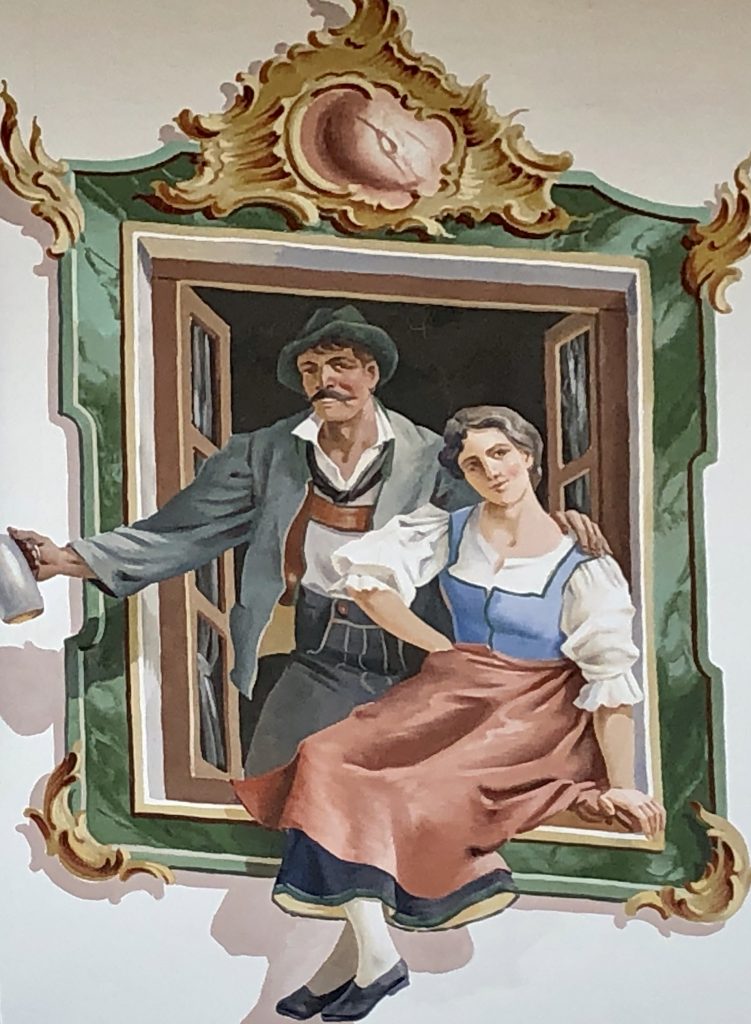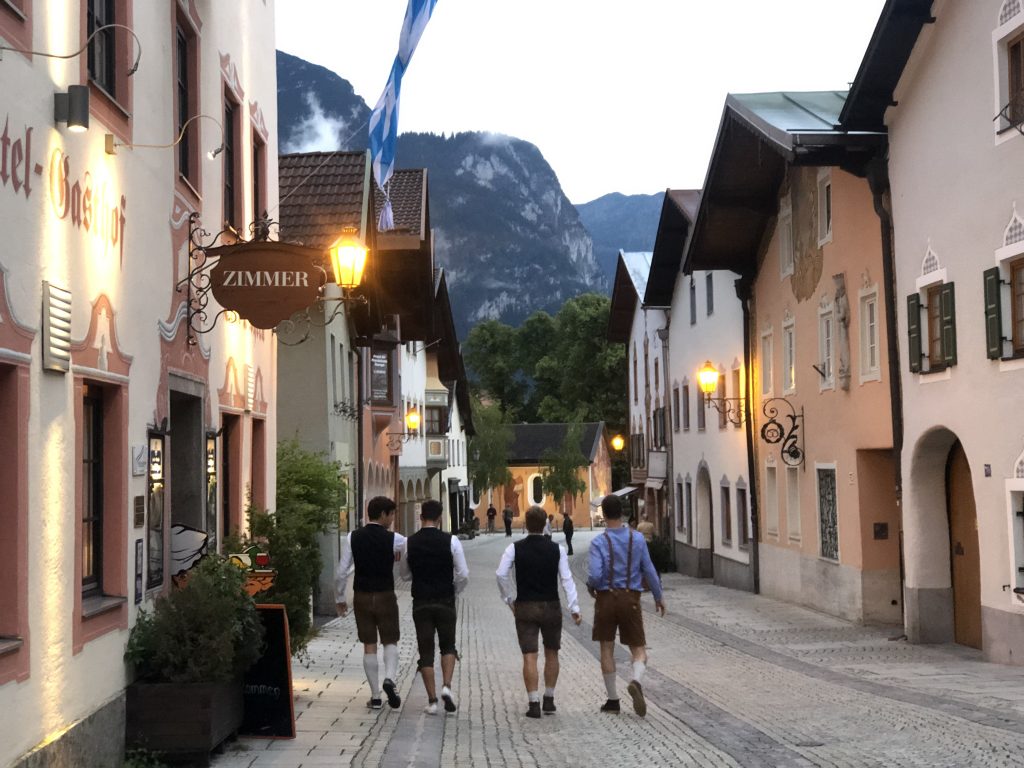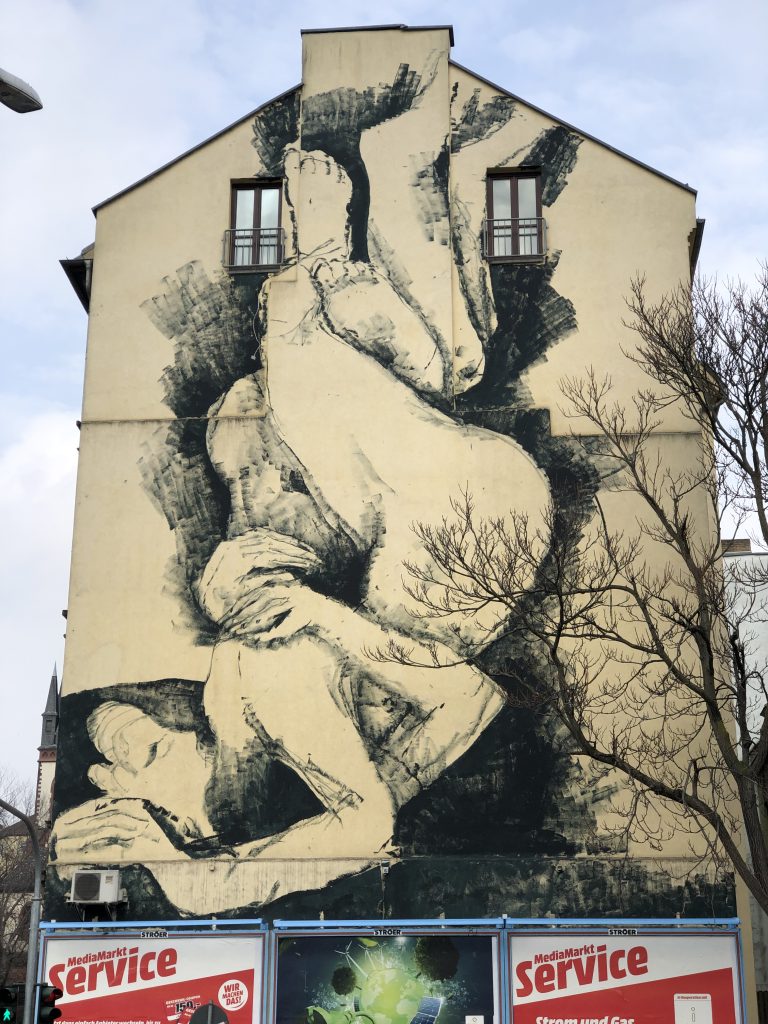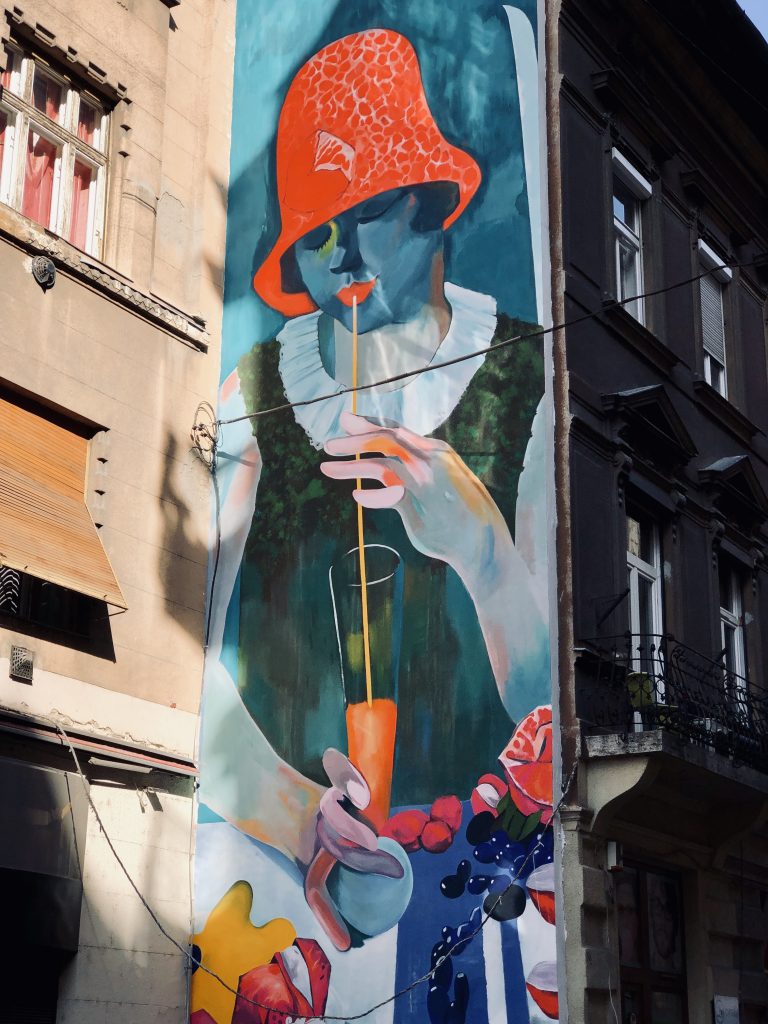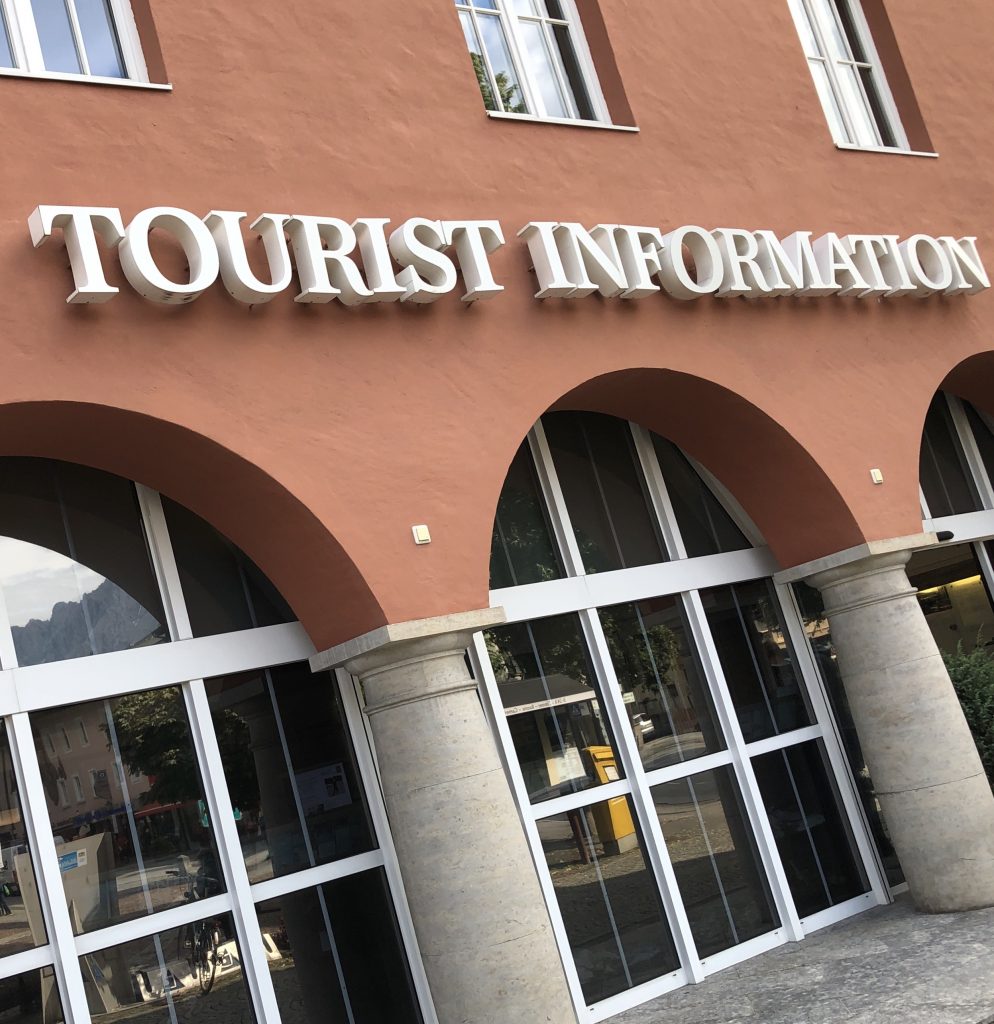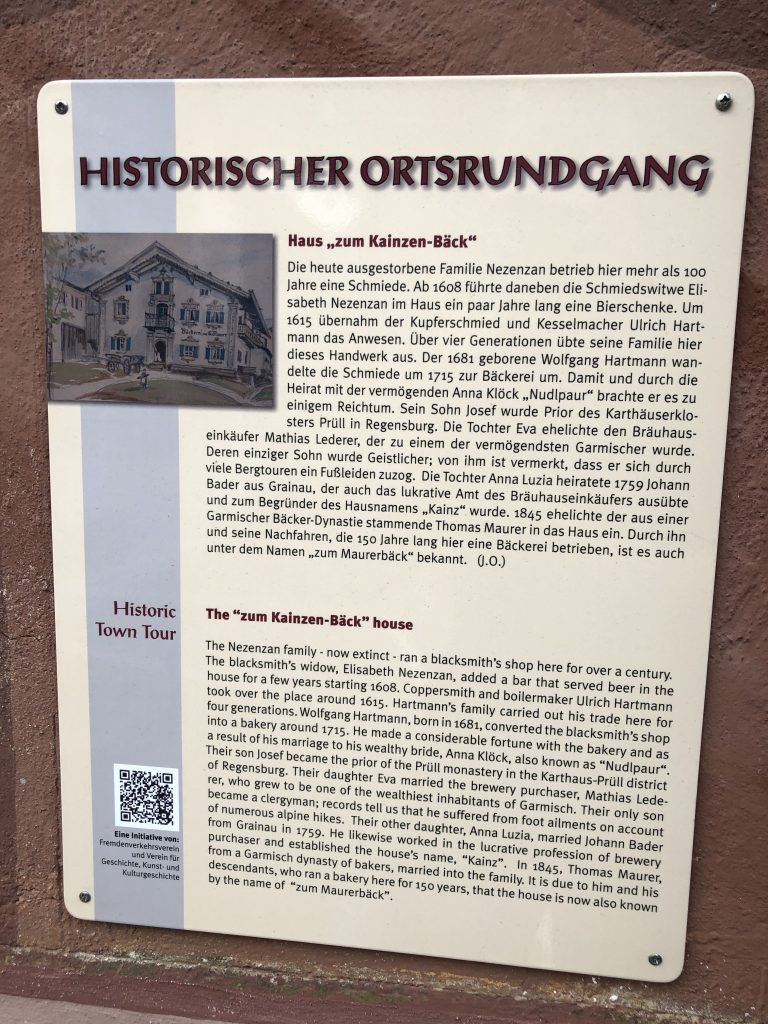Worst of all, there is a real danger that these works of art may disappear.
So I started taking notes of the murals that I saw on morning jogs throughout the town. Quite literally, I was jogging in the footsteps of Franz Joseph Bronner, some 120 years before me:
“On my numerous hikes through the Bavarian highlands, at the beginning, just for the sake of hobby, I took pictures of one or the other picture-decorated farmhouse that caught my eye. Later I purposefully followed the traces of old fresco paintings and did not shy away from the 4-5 hours long way to remote farms.”
More than once, someone stopped me while I ran, made me take the earbuds out of my ears, and gesticulated, in frantic German, wanting to know just why was I taking pictures of their house?!?!
There were others, though (retirees, mostly, gardening as I stopped to stare at the murals on their house) who were more than happy to share the story behind their lüftlmalerei — who were, in fact, quite proud to see someone took such an interest.
So often, we walk through the world without noticing the beauty of the simple things around us. So often, we take them for granted. My research was an invitation — like asking someone about a tattoo I might have glanced, poking out from beneath a sleeve — in the simple act of noticing something so private and personal, I allowed other people an opportunity to describe all the reasons it was beautiful and important to them.
So when I explained to those who stopped me — angry that I might have ill intent or “long fingers,” as they say in German — they had to smile when I scrolled through the pictures on my phone, and all they saw for pages and pages were pictures of lüftlmalerei. And it occurred to them — perhaps for the very first time — that someone, besides themselves, was curious to know what the pictures on the walls were really all about.
Perhaps it was the first time they had asked themselves, why were they there? And what did they mean?
Like Franz Joseph Bronner around the turn of the last century, I suddenly found myself with a collection of farmhouse photos and notebooks scribbled full of notes.
After awhile, I began to think very seriously about writing a book of my own — a guidebook, perhaps, or maybe a walking tour of the market town… A work of serious academic rigor, but, for this otherwise sleepy little ski-town, also meant to make you just notice — if maybe just for a moment — the momentous history in the beauty of the art that surrounds you here.
But soon, the sheer volume of information and pictures I was collecting proved too big for just another long forgotten tomb of lüftl lore. Like Scheherazade, I had collected more than a thousand and one stories — about the art, the artists, and the sheer act of researching both. I realized that what I had, was the start of an encyclopedia of lüftlmalerei. And, given the technology we have today, there’s no reason that there shouldn’t be, not just another book, but something online that anyone could connect to while wandering the town, curious about what they saw.
And while my goal is now to create a comprehensive codified collection of ALL the lüftlmalerei paintings in Garmisch-Partenkirchen and their stories, until then, I still want to share with anyone interested what I’ve been learning. Hence, this website — a work-in-progress and a place to put my notes and jot and scribble the stories that I’ve been collecting where anyone can comment or correct me as I go.
I appreciate your patience in my journey, and want to thank you so much for your time and interest.
Mit freundlichen Grüßen!
–Justin

